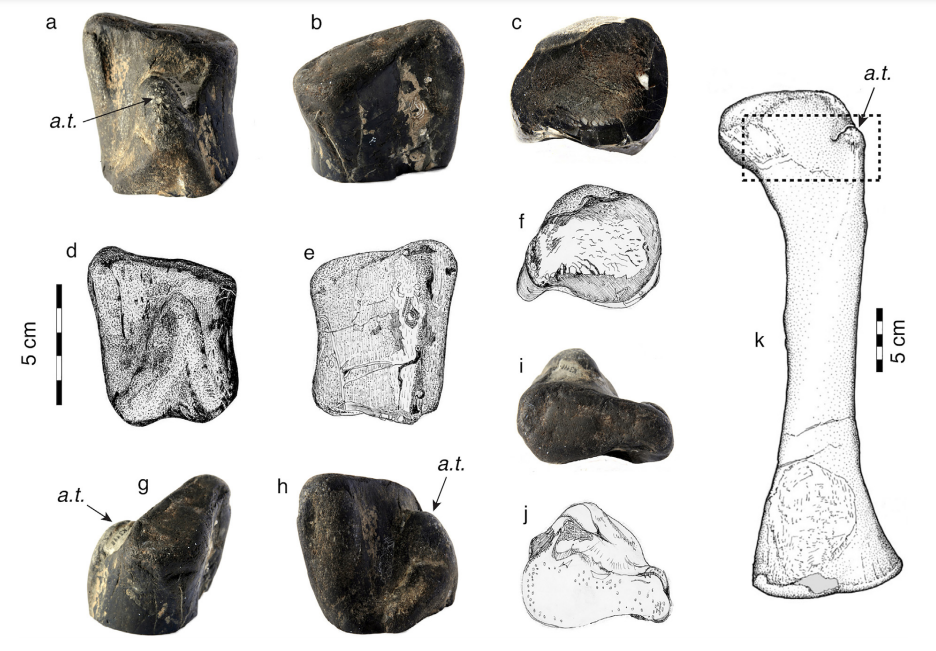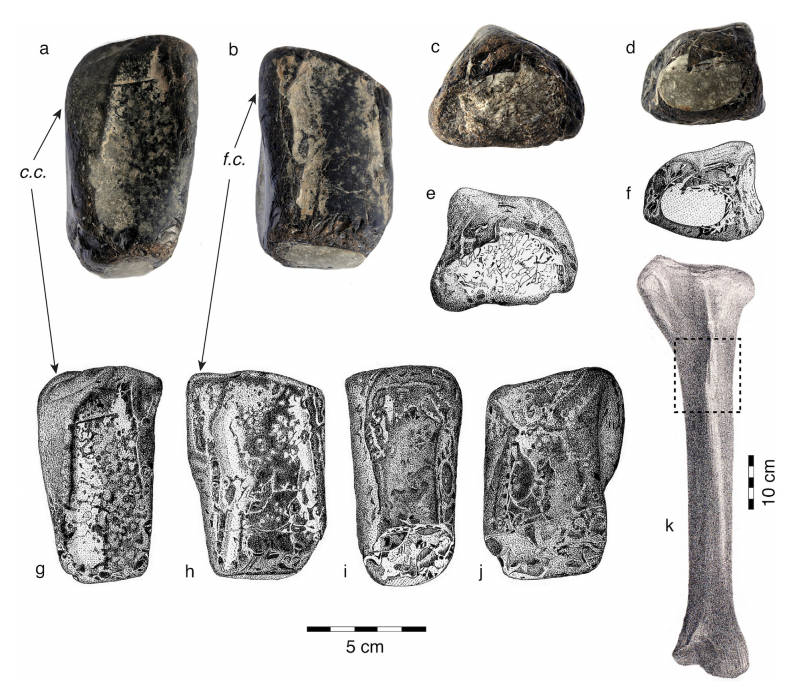Researchers from the University of Portsmouth, Queen’s University Belfast, and National Museums Northern Ireland (NI) report on a first-ever for the island — the first-ever dinosaur bones to be discovered in Ireland.

The two fossils were discovered by Roger Byrne, a late fossil collector and schoolteacher, who donated them (among many other specimens he’s gathered) to Ulster Museum. Researchers were able to confirm that they hail from the early Jurassic, based on where they were discovered — rocks in Islandmagee, on the east coast of Northern Ireland.
Locally-sourced
“This is a hugely significant discovery. The great rarity of such fossils here is because most of Ireland’s rocks are the wrong age for dinosaurs, either too old or too young, making it nearly impossible to confirm dinosaurs existed on these shores,” explains Dr. Simms, National Museums NI, first author of the study. “The two dinosaur fossils that Roger Byrne found were perhaps swept out to sea, alive or dead, sinking to the Jurassic seabed where they were buried and fossilized.”
The only dinosaur bones ever found on the island of Ireland have been formally confirmed for the first time by a team of experts from the University of Portsmouth and Queen’s University Belfast, led by Dr. Mike Simms, a curator and paleontologist at National Museums NI.
Initially, the two fossils were believed to have belonged to the same animal. However, the authors report that they, in fact, belonged to two completely different dinos. One of them, a femur, belonged to a plant-eating species, Scelidosaurus. The other one was a tibia from a theropod, a two-legged predatory dinosaur similar to Sarcosaurus. The team identified their origin starting from high-resolution 3D models of the bone fragments.

“Analyzing the shape and internal structure of the bones, we realized that they belonged to two very different animals. One is very dense and robust, typical of an armored plant-eater” says co-author Robert Smyth from the University of Portsmouth. “The other is slender, with thin bone walls and characteristics found only in fast-moving two-legged predatory dinosaurs called theropods”.
Although the specimens aren’t in ideal shape — they are, after all, broken into pieces, they still carry a huge paleontological weight. Not only were they discovered in Ireland, filling a gap in our understanding, but they also hail from an important time in the history of the dinosaurs. During the early Jurassic, about 200 million years ago, dinosaurs were poised to take the crown of the dominant terrestrial lineage and start dominating land ecosystems.
The paper “First dinosaur remains from Ireland” has been published in the journal Proceedings of the Geologists’ Association.
Was this helpful?



